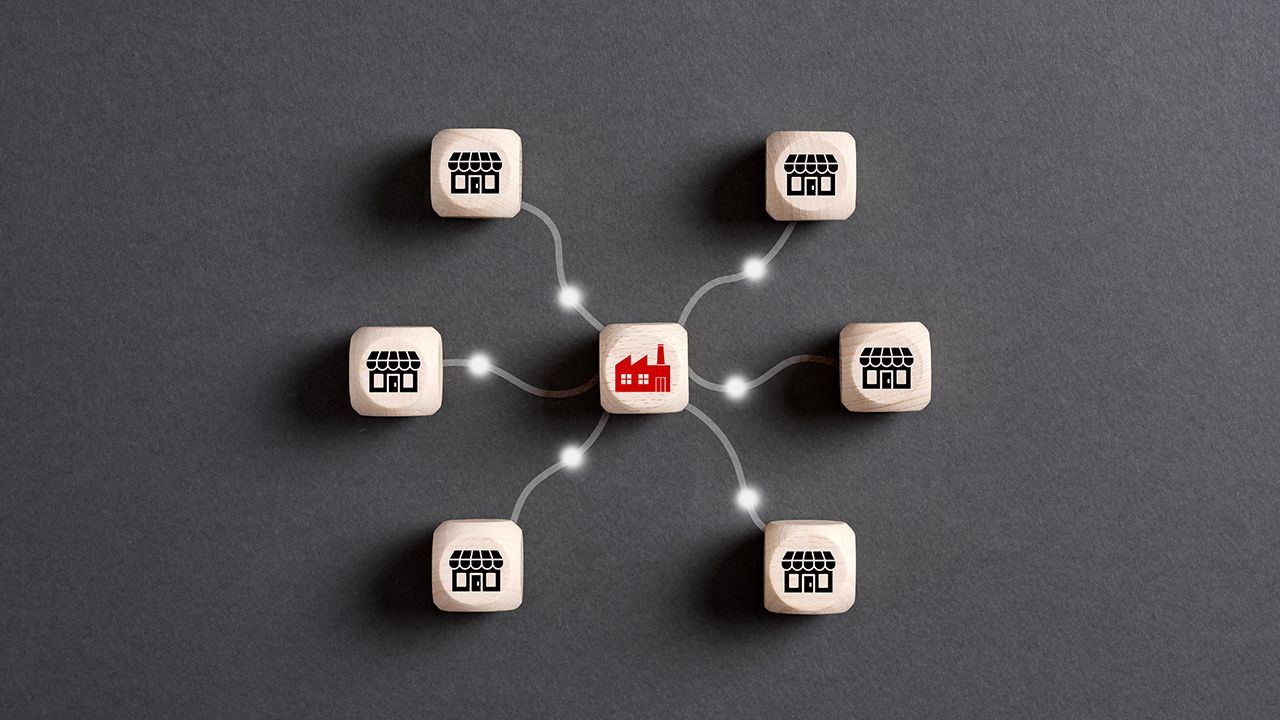Publication
Article
BioPharm International
Producing Proteins Using Transgenic Oilbody-Oleosin Technology
Author(s):
Transgenics can substantially reduce capital investment and lower production costs through economies of scale and more flexible scale-up.
Securing a safe, economical, and reliable supply of a recombinant therapeutic protein for use in clinical trials and commercialization is an important strategic issue that must be addressed early in the development process. Today, bacteria, yeast, and mammalian cell cultures are routinely used for large-scale commercial production of biopharmaceuticals, but these systems are frequently costly and lack flexibility for scaling up production. Typical unit production costs range from US$100–1,000 per gram of purified protein product, depending on the product, volume, and production system. Capital investment is in the order of several hundred million dollars for a large capacity (100,000 L) facility.1,2

Nancy Markley, Ph.D
The construction and validation of cGMP compliant facilities requires long lead times, typically three to five years, which creates challenges in matching capacity to demand. As a result, companies must make manufacturing choices and a substantial upfront investment in capacity while their products are still in the test phases. The uncertainty of regulatory approval, and the difficulties in predicting market demand impose a significant business and financial risk. For drug developers, investing large amounts of capital on a drug that is awaiting approval is an expensive and very risky prospect; however, having a drug that is approved without a reliable supply of product can have equally dire consequences.

Transgenic production holds tremendous promise for dealing with the cost, capacity and scale-up limitations faced by traditional systems. Trans-genics can substantially reduce capital investment and lower production costs through economies of scale and more-flexible scale-up. Such advantages could enable the commercialization of proteins that would otherwise be impractical due to cost or capacity constraints, and provide scope for pricing flexibility that could be passed on to patients and health care systems. These benefits could allow companies to expand into new markets, such as follow-on biologics, where price is a barrier to entry.
Transgenic technologies have made significant advances in recent years and several companies have moved products into the clinic and validated their technologies through partnerships with well-established pharmaceutical and biotechnology companies.3,4 Transgenic systems encompass a variety of hosts and tissues from animal, plant, and avian origin. No transgenically derived product has been approved yet. We believe that it is plausible that insulin will be the first. With that in mind, we will discuss our technology based on oilbodies, followed by a description of recombinant protein production systems. We will wrap up with a case study of producing insulin with these technologies.
OILBODY-OLEOSIN TECHNOLOGY
Oilbody-oleosin technology offers several advantages for protein production and purification over traditional cell culture and other transgenic systems. Oilbody-oleosin technology is unique, as it is the only recombinant technology that addresses protein recovery and purification (processes that represent as much as 75% of the cost of production) contemporaneously with bulk protein production. The capital investment in an oilseed processing facility is roughly an order of magnitude lower than that of conventional fermentation facilities.
Beyond economics, oilseeds offer superior inventory management when compared to other transgenic systems. Unlike proteins expressed in milk or leaves, recombinant proteins have been found to be stable in transgenic seeds for several years. Seeds can be stockpiled and safflower, our commercial production crop, can be grown counter-seasonally, allowing maximal flexibility for inventory management. We believe that using safflower will allow us to readily address regulatory issues associated with transgenic crops, because safflower is a small acreage crop that is largely self-pollinating and can easily be geographically segregated from other safflower production and from the main food and feed crops.
The Advantages of Seed Oilbodies
The oilbody-oleosin technology exploits oilseed plants, typically safflower, to produce recombinant proteins abundantly and at low cost. The technology is built on two basic proprietary capabilities. The first is the capability to express recombinant proteins in seed oilbodies. The second is the ability to extract oilbodies inexpensively from seeds.

Figure 1. Cross-section of a safflower seed stained to show proteins
The oilbody is a unique seed–oil storage organelle (Figure 1). Oil-bodies possess a highly organized structure consisting of a core of neutral lipid or triacylglycerol surrounded by a half-unit membrane of phospholipids and an outer surface layer composed primarily of a single class of protein known as oleosin. (Figure 2)
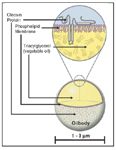
Figure 2. Oilbody structure and a detail showing location of the oleosin at the surface.
Oleosins are unique proteins with natural surfactant properties derived from alternating amphipathic and lipo-philic domains. The central domain of oleosins is highly lip-ophilic, containing the longest continuous stretch of hydrophobic amino acids yet reported, tightly anchoring the protein within the neutral lipid core of the oilbody. The amphipathic N- and C-termini interact with the phospholipids membrane forming a network that surrounds the oilbody in an amphipathic shell. The resulting structure is a highly stable, natural microparticle.

Figure 3. Picture A depicts an oleosin protein targeted to a natural oilbody. Picture B depicts the Stratosome Biologics System in which an oleosinârecombinant protein fusion (designated GeneX) is targeted to an oilbody to form a recombinant oilbody carrying the desired protein.
Flexible Recombinant Protein Production
We have developed two proprietary recombinant protein production systems, the Stratosome Biologics System and the Affinity Capture System. Together, these systems offer the ability to produce a wide array of recombinant proteins. This technology uses genetic engineering to express recombinant proteins in oilbodies in the seed (Figure 3). It works at a large-scale using a continuous flow procedure (Figure 4).
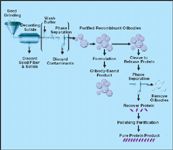
Figure 4. Flowchart of the Stratosome Biologics System
The Stratosome Biologics System
Using plant genetic engineering techniques, we can target recombinant proteins to the surface of oilbodies through covalent fusions with oleosin. The combination of oilbody engineering with oilbody extraction is the basis of the Stratosome Biologics System. Here are the steps:
- Genetic engineering is used to introduce a transgene encoding an oleosin–GeneX fusion protein into the plant. As the plant grows and the seed develops, the oleosin–GeneX fusion is expressed to produce a recombinant fusion protein such as insulin or apolipoprotein AI. The recom-binant fusion protein then targets the oilbody to form a recombinant oilbody, as depicted in Figure 3B.
- Seed is produced from the genetically engineered plants using conventional farming practices that have been adapted to ensure product integrity and confinement.
- The harvested seed is then processed using the proprietary oilbody extraction process depicted in Figure 4.
- In cases where a purified protein is the end product, an enzyme or chemical that recognizes a cleavage site between the target protein and the oleosin is added to purified oilbodies. The enzyme or chemical then cleaves the recombinant protein from the oleosin.
- The oilbodies are then removed via centrifugation and the recombinant protein can then be further purified further using conventional downstream processing techniques with simple steps and at low cost.
A wide array of proteins, ranging in size from ~1 kDa (nine amino acids) to over 100 kDA, have been produced using the Stratosome Biologics System. In addition to simple proteins, we have demonstrated that proteins with complex secondary and tertiary structure, including those requiring the formation of multiple disulfide bridges, can be produced using this system. We have achieved recombinant protein accumulation levels of more than 5% of total seed protein for some proteins, which is five times higher than our minimum commercial threshold.
Affinity Capture System
In cases where a protein does not accumulate as an oleosin fusion, for example with proteins which must be exposed to the secretory pathway, a modification is available that combines conventional plant protein expression with oleosin technology. In this modification, an affinity ligand is fused either to the oleosin or the protein of interest through genetic engineering. The desired protein can then be targeted for deposition in any cellular compartment. When the seed is ground up, the protein of interest associates with the oilbody and the resulting oilbody–protein assembly can be separated from the rest of the seed components. The desired protein is then disassociated from the oilbody using conventional techniques (changing pH or ionic strength for example), or, if the ligand was attached to the protein of interest, the fusion is cleaved. The protein of interest is then available for final purification.
The Extraction Process: Oil is Lighter Than Water
We have developed technology to extract and stabilize intact oilbodies from seeds using a cost-effective aqueous extraction process. This process is depicted in Figure 5 and is based on the differential density of oil and water. The seeds are homogenized using a mill. The oilbodies are then separated from the balance of the seed material and washed using a series of centrifuges to remove seed-derived impurities. The resulting product consists of 75% oilbodies and 25% water, with negligible carryover of other seed materials. The vast majority of the seed proteins are removed by this process. At this stage, we have removed over 98% of the contaminating proteins originally present in the seed, and the resultant oilbody fraction is highly enriched with the recombinant target protein. Conventional downstream processing completes purification of the recombinant protein. Oilbody processing dramatically simplifies downstream processing and reduces the overall cost of bulk protein production by reducing the number of costly chromatographic steps.

Figure 5. Oilbody extraction technology
We currently operate a 1,800-ft2 pilot plant capable of processing approximately 100 kg/hr of seed (43 kg/hr of oilbodies), and are working to establish a cGMP cabability to produce clinical quantities of our pharmaceutical protein product candidates for use in Phase 1 and Phase 2 clinical trials.
INSULIN:A PRODUCT CANDIDATE
We are developing insulin derived from genetically engineered safflower to serve the expanding diabetes market and to facilitate the commercialization of alternative insulin delivery technologies.
According to the World Health Organization, diabetes affected an estimated 177 million individuals worldwide in 2000 and is projected to affect over 370 million individuals by 2030.5 Insulin therapy is the exclusive treatment for Type 1 diabetics and is also being more frequently prescribed for Type 2 diabetics. In 2003, the worldwide insulin market was valued at approximately $4.3 billion and is projected to grow to $7.1 billion by 2010, due to growth in incidence, diagnosis, usage, and the commercialization of new insulin technologies.6
Until recently, insulin could only be effectively administered through injection; however, significant efforts have been made by a number of biotechnology and pharmaceutical companies to develop technologies that will allow insulin to be administered in other ways. Some companies working on the development of alternative delivery technologies are listed in Table 1.
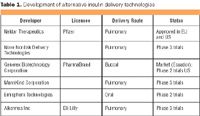
Table 1. Development of alternative insulin delivery technologies
For some developers of alternative delivery technologies, access to a low cost, high volume supply of insulin is key to the successful commercialization of their technology. Based on pharmacokinetic analysis, companies developing alternative insulin delivery technologies estimate that these technologies will require approximately 5 to 20 times more insulin than the amount required for injection. We project that with the commercialization of alternative delivery technologies, manufacturing de-mands will increase from the current 4,000 kg/yr to an estimated 16,000 kg/yr by 2010. We believe that our safflower-produced insulin will allow us to supply this expanding market while simultaneously reducing the cost of insulin production.
The current cost of insulin production is approximately $50 to 60 per gram. We believe our technology will allow us to reduce the unit cost by at least 40%. Based on information received from published sources, we believe the capital expenditure associated with building insulin-manufacturing facilities can cost over $250 million per ton of capacity. We project that our technology will reduce the capital cost of manufacturing facilities by 70%.
OILBODY-OLEOSIN TECHNOLOGY ENABLES INSULIN PRODUCTION
Insulin is a small, 5.8 kDa polypeptide hormone consisting of an A chain of 21 amino acids and a B chain of 30 amino acids linked together with two cysteine disulfide bridges (Figure 6).
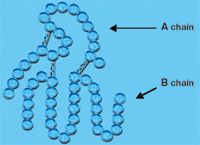
Figure 6. Schematic representation of human insulin
As a first approach to demonstrating proof-of-principle for insulin production, we introduced human mini-insulin (Des-B30) into our model organism Arabidopsis thaliana.7 Des-B30 insulin is a biologically active form of human insulin that differs from authentic insulin by the deletion of the C-terminal threonine amino acid on the B chain. Des-B30 is produced in other transgenic systems (e.g., yeast) and this form of insulin can be matured to authenticity through a simple in vitro transpeptidation reaction.8 To optimize accumulation, genetic constructs were engineered to target expression of the recombinant insulin to both the endoplasmic reticulum (ERi) and the oilbody surface (OBi). In addition to the Des-B30 insulin gene and Trypsin-cleavable pro-peptide sequence, present in both the OBi and ERi constructs, the ERi construct included a KDEL (lysine-aspartate-glutamate-leucine) endoplasmic reticulum retention signal peptide and an affinity tag for oleosin.
Using the oilbody extraction and purification technology described above, recombinant insulin was purified and analyzed to quantify the expression of ERi and OBi (Figure 7). We were able to demonstrate through this analysis that Arabidopsis can express insulin at a level of 0.13% of total seed protein. Subsequent experiments conducted with variations of the ERi constructs have resulted in expression levels at commercially relevant levels of 1.15% of total seed protein. This expression level is approximately 50 times higher than previously reported transgenic plant systems engineered to produce insulin.9
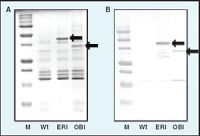
Figure 7. Expression of Des-B30 insulin in transgenic oilseed. (A) Oilbody prepared proteins (20 μg) from seeds expressing the ERi (affinity capture technology) or OBi (Stratosome technology) transgene compared to non-recombinant (Wild type) oilbody proteins separated on 15% SDS-PAGE and Coomassie-stained; (B) the corresponding Western blot probed with anti-insulin monoclonal antibody E2E3 (ab9569; Abcam, Cambridge, Mass.). Symbols: (Arrows = fusion proteins; Wt = wild type seed; M = molecular marker)
Plant-Derived Insulin Can Be Matured In Vitro With Trypsin
To enable insulin maturation and recovery following oilbody separation, the Des-B30 insulin fusion protein was engineered to contain a trypsin cleavable pro-peptide. SemBioSys has shown that when recombinant mini-insulin is trypsin-cleaved from its fusion partner, it undergoes full protein maturation to the expected Des-B30 insulin. Insulin maturation and authenticity relative to commercial insulin standard was confirmed through mass spectral analysis (Figure 8).
Figure 8. Mass spectral analysis of plant-derived insulin. Human insulin standard (Sigma) in comparison to Des-B30 insulin derived from trypsin matured endoplasmic reticulum and oilbody surface seed. Samples were purified by reverse phase high-performance liquid chromatography prior to analysis.

The expected molecular mass of Des-B30 insulin is 5706.5 Da. The observed molecular mass of the trypsin-cleaved-matured OBi product (5706.30 Da) precisely matched the expected molecular mass and, therefore, directly corresponded to Des-B30 insulin. The difference between the expected and observed molecular mass for trypsin-cleaved-matured ERi (6191.51 Da) corresponded to a Des-B30 insulin with a KDEL ER retention peptide on the A chain of the cleaved product (Des-B30 insulin-KDEL).
Biological Equivalence to Commercial Insulin
Using an established animal model we demonstrated the biological equivalence of plant-produced insulin relative to commercial varieties of insulin. OBi was used in an insulin tolerance test performed on 15 two-month-old C57±/6 male mice. This bioassay was performed to determine the in vivo effect of SemBioSys's plant-derived insulin (Figure 9).

Figure 9. Insulin Tolerance Test. Temporal changes in serum glucose levels in male B6 mice following intraperitoneal (IP) injection of insulin standards (Humulin R or Roche) in comparison to OBi derived Des-B30 insulin and negative controls (saline or identically treated non-recombinant OB derived fractions).
linebreak/>
OBi Des-B30 insulin was shown to function in a statistically identical manner (p < 0.05) to Humulin R pharmaceutical-grade and Roche research-grade insulin following intraperitoneal injection over the time-course of the study. All insulins tested significantly reduced plasma glucose levels (p < 0.05) in comparison to saline and a negative control fraction from Trypsin-cleaved wild-type Arabidopsis oilbodies. No toxic side effects were observed with OBi insulin. We are currently optimizing insulin expression in safflower and anticipate completing development of our production variety in 2006. SemBioSys is focusing its development efforts on those protein candidates where our platform addresses major commercialization challenges with respect to scale and cost of production, such as is the case with insulin.
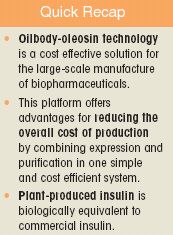
Quick Recap
Nancy Markley, Ph.D. is director of business development at SemBioSys Genetics Inc. , 110, 2985–23 Avenue, N.E. Calgary, Alberta, Canada T1Y 7L3, 403.717.8774, fax 403.250.3886, markleyn@sembiosys.com
Cory Nykiforuk, Ph.D. is biochemistry group leader at SemBioSys Genetics Inc. nykiforukc@sembiosys.com
Joe Boothe, Ph.D. is director of biochemistry at SemBioSys Genetics Inc. boothej@sembiosys.com
Maurice Moloney, Ph.D. is founder and chief scientific officer at SemBioSys Genetics Inc. moloneym@sembiosys.com
REFERENCES
1. Werner RG. Economic aspects of commercial manufacture of biopharmaceuticals. J. Biotech. 2004; 113:171–182.
2. Roth GY. Bio-outsourcing report. Will bio-generics create a new CMO business? Contract Pharma 2004 June:43-50.
3. Ingley A, Pavlik J, Smith T. Transgenic protein production as an alternative manufacturing technology for pharmaceutical companies. Kellogg School of Management. Evanston IL. 2002; 1–28.
4. Boothe J and Markley NA. The design and use of transgenic plant expression systems for the production of foreign proteins. Recent Advances in Phytochemistry 2003:31–57.
5. World Health Organization, Diabetes mellitus. Fact Sheet N 138. 2002 April.
6. Datamonitor. Recombinant therapeutic proteins. 2004; Reference Code DMHC1975.
7. Nykiforuk CL, Boothe JB, Murray EW, Keon RG, Goren J, Markley NA, Moloney MM. Transgenic expression and recovery of biologically active recombinant human insulin from Arabidopsis thaliana seeds. Plant Biotechn. J. 2005; 3:77–85.
8. Kjeldsen T, Balschmidt P, Diers I, Hach M, Kaarsholm NC, and Ludvigsen S. Expression of insulin in yeast: The importance of molecular adaptation for secretion and conversion. Biotech. and Gen. Eng. Rev. 2001; 18:89–121.
9. Arakawa Y, Yu J, Chong DKX, Hough J, Engen PC, and Langridge WHR. A plant-based cholera toxin B subunit-insulin fusion protein protects against the development of autoimmune diabetes. Nature Biotech. 1998; 16:934–938.
ACKNOWLEDGEMENTS
We thank Liz Murray, Ph.D., Harm Deckers, Ph.D., Tara Girvitz, and Phillip Stephan for their contributions to the generation of data, preparation of figures and text, and critical review.
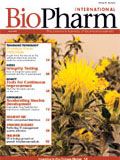
Newsletter
Stay at the forefront of biopharmaceutical innovation—subscribe to BioPharm International for expert insights on drug development, manufacturing, compliance, and more.



